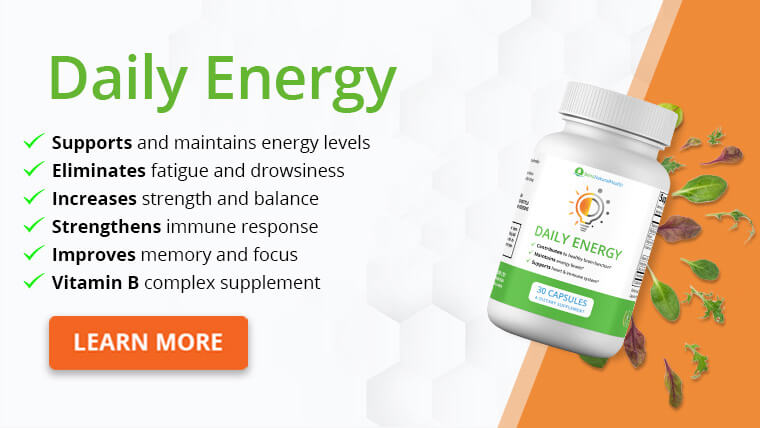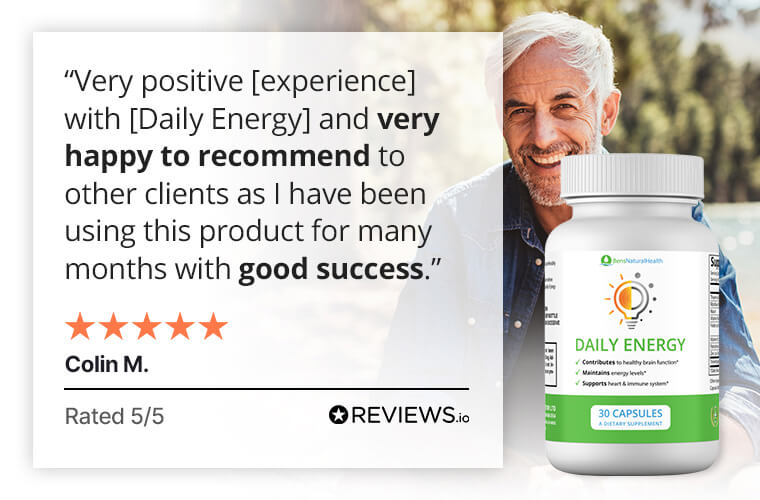- What is Pantoprazole?
- How does Pantoprazole work?
- Foods to avoid with Pantoprazole
- Can you drink alcohol with Pantoprazole?
- Foods to eat while taking Pantoprazole
- Other things to avoid while taking Pantoprazole
- Should Pantoprazole be taken with food?
- What is the best time to take Pantoprazole?
- How to reduce the side effects of Pantoprazole
- Any other safety concerns?
- Conclusion
- Source
If you haven’t personally had heartburn before, you likely know someone who has experienced this uncomfortable condition.
While some people get heartburn a few times in their lives, others suffer from chronic heartburn and look to prescription medications to find relief.
Pantoprazole is a medication used to treat heartburn.
What foods should you eat and avoid while taking pantoprazole, and what else can you do to help your heartburn stay away?
We’ll answer those questions and much more in this informative article.
What is Pantoprazole?
Pantoprazole is a drug to treat gastroesophageal reflux disease (GERD), which is commonly referred to as acid reflux or heartburn.
Besides treating GERD, pantoprazole can also help reduce high levels of stomach acid, which certain tumors can cause.
You might be diagnosed with GERD if you have heartburn symptoms such as:
- A burning sensation in your chest, usually after eating, which might be worse at night
- Chest pain
- Difficulty swallowing
- Regurgitation of food or a sour liquid (also called indigestion)
- A sensation of a lump in your throat
The common brand name for pantoprazole is Protonix, and the typical dose is 40 milligrams orally once daily for up to eight weeks.
You can take pantoprazole as a tablet or an oral powder to mix with juice, which is more suitable for children approved to take pantoprazole.
Intravenous (IV) pantoprazole is also used in a hospital setting.
Other uses
Pantoprazole is also used to treat erosive esophagitis, which occurs when prolonged acid reflux damages your esophagus (the tube which carries food from your mouth to your stomach).
Finally, pantoprazole can be used to treat Helicobacter pylori infections. H. pylori is a type of bacteria that can infect your stomach and cause symptoms like stomach pain, nausea, and unintentional weight loss.
H. pylori causes painful stomach ulcers, which is where pantoprazole comes into the picture. By reducing stomach acid levels, stomach ulcers can better heal without being irritated by the acid. (Antibiotics are also required to treat H. pylori.)
How does Pantoprazole work?
Pantoprazole is in a class of medications called proton pump inhibitors, or PPIs. PPIs work by preventing certain cells in your stomach from pumping acid into your stomach.
When stomach acid production is lower, you’ll have less acid to enter your esophagus, which causes the painful burning sensation with GERD.
Stomach acid is important for healthy digestion and helps you absorb certain nutrients like vitamin B12, which is why it’s not ideal to take pantoprazole long-term since doing so can lead to vitamin B12 deficiency if pantoprazole is taken for up to a year or longer.

Foods to avoid with Pantoprazole
If you’re taking pantoprazole, you should ideally follow a diet for acid reflux to help reduce your symptoms and allow your esophagus to heal.
Certain foods cause your gastroesophageal sphincter (the opening at the bottom of your esophagus, located near the top of your stomach) to relax, which allows stomach acid to enter your esophagus.
By avoiding foods that relax your gastroesophageal sphincter, you can help pantoprazole to be even more effective at reducing your GERD symptoms.
Fatty & fried food
High-fat foods can relax your esophageal sphincter and lead to GERD symptoms. High-fat meats, full-fat dairy products, and fried foods might worsen your acid reflux.
Fat also takes longer to digest, worsening heartburn symptoms in some people.
For instance, if you substitute a lower-fat food like chicken breast instead of a fatty steak or a baked potato instead of French fries, it can help to keep your acid reflux in check while you’re taking pantoprazole.
Some examples of high-fat foods to avoid while taking pantoprazole include:
- Beef (especially non-lean cuts)
- Lamb
- Pork
- Poultry with the skin on
- Lard and cream
- Butter
- Cheese
- Ice cream
- Coconut (including coconut oil)
- Palm oil and palm kernel oil
- Some baked (e.g., croissants made with butter) and fried foods
Acidic foods
High-acid foods like tomatoes and citrus fruits may exacerbate your GERD symptoms by irritating the lining of your esophagus if you’re experiencing reflux.
If you enjoy acidic foods and don’t want to give them up entirely, try to avoid eating them on an empty stomach and watch your portion sizes. After all, many acidic foods have impressive health benefits!
Chocolate
The cocoa beans used to make chocolate are acidic, and chocolate also contains caffeine.
These two reflux culprits might cause your reflux symptoms to worsen, so you should avoid chocolate with a high percentage of cocoa while taking a round of pantoprazole.
Other types of chocolate not high in cocoa (milk chocolate, etc.) might still aggravate GERD symptoms because they’re high in fat from the cocoa butter used, so you may need to cut back on them as well.
Peppermint
While peppermint is a common remedy for nausea and other stomach issues, it might not be the best choice if you have acid reflux.
Part of the way peppermint helps with nausea is by relaxing the muscles in your stomach. That relaxation can also impact your lower esophageal sphincter, causing acid reflux symptoms.
Spicy foods
Certain spices tend to aggravate GERD symptoms, so you may want to be cautious when eating things with spices such as:
- Cayenne pepper
- Curry seasoning
- Cinnamon
- Nutmeg
Can you drink alcohol with Pantoprazole?
Pantoprazole doesn’t interact with alcohol. However, alcohol is one of the main GERD triggers, along with the foods and drinks already mentioned.
You should avoid heavy alcohol consumption while taking pantoprazole, but drinking it in moderation is likely safe.
If your heartburn symptoms persist while taking pantoprazole, it’s worth cutting out alcohol altogether to determine if it’s a trigger for you.
Foods to eat while taking Pantoprazole
Now you have a list of foods to avoid while taking pantoprazole, let’s discuss which foods you should eat.
Low-acid fruits and vegetables
The pH scale measures how acidic or basic (opposite of acidic) – the scale goes from 0-14, with 0 being the most acidic, 7 being neutral, and 14 being the most basic.
For reference, citrus fruit has a pH that falls in the range of 2-3. These lower-acid fruits and vegetables fall higher on the pH scale and aren’t likely to worsen GERD symptoms while you’re taking pantoprazole.
Fruits
- Avocados (pH 6.27-6.58)
- Bananas (pH 4.50-5.20)
- Cantaloupe (pH 6.13-6.58)
- Dates (pH 5.49)
- Figs (pH 5.05-5.98)
- Honeydew melon (pH 6.00-6.67)
- Kiwi (pH 4.84)
- Mangoes, ripe (pH 5.80-6.00)
- Olives, black (pH 6.00-7.00)
- Papaya (pH 5.20-6.00)
- Pear, Bosc (pH 5.15)
- Persimmon, Fuyu (pH 6.25)
- Pumpkin (pH 4.99-5.50)
- Watermelon (pH 5.18-5.60)
Vegetables
- Acorn squash (pH 5.18-6.49)
- Asparagus (pH 6.00-6.70)
- Broccoli (pH 6.30-6.85)
- Brussels sprouts (pH 6.00-6.30)
- Cabbage (pH 5.20-6.80)
- Carrots (pH 5.88-6.40)
- Cauliflower (pH 5.60)
- Celery (pH 5.70-6.00)
- Corn (pH 5.90-7.50)
- Cucumbers (pH 5.12-5.78)
- Eggplant (pH 5.50-6.0)
- Hearts of palm (pH 5.70)
- Mushrooms (pH 6.00-6.70)
- Okra, cooked (pH 5.50-6.60)
- Parsnip (pH 5.30-5.70)
- Potatoes (pH 5.40-5.90)
- Radishes (pH 5.85-6.05)
- Soybeans (pH 6.00-6.60)
- Spinach (pH 5.50-6.80)
- String beans (pH 5.60)
Lean protein
Lower-fat protein can help make you feel full without triggering your GERD. Some great lean protein choices include:
- Skinless poultry
- Lean cuts of red meat
- Eggs
- Soybeans/soy products
- Low-fat dairy products like yogurt or cottage cheese
- Beans, peas, and lentils
- White-fleshed fish
Whole grains
Eating large portions of food can increase the pressure in your stomach and contribute to acid reflux symptoms.
Filling up on whole grains can help make you feel fuller with smaller portions thanks to their fiber content, which boosts satiety compared to refined grains (those made with white/enriched flour).
Instead of white bread, white rice, and other refined, low-fiber grains, fill up on whole grains like:
- Barley
- Brown rice
- Buckwheat
- Bulgur (cracked wheat)
- Millet
- Oatmeal
- Popcorn
- Whole-wheat bread, pasta, or crackers
Other things to avoid while taking Pantoprazole
Coffee and other caffeinated beverages
Caffeine is one of the main reflux triggers which can cause heartburn symptoms.
Coffee, caffeinated tea, and energy drinks might worsen your symptoms, so you should avoid them while taking pantoprazole.
Eating soon before bed
Lying down soon after eating can cause heartburn since gravity allows stomach acid to enter your esophagus more easily. Allow yourself at least 2-3 hours after eating before going to bed.
In addition, you can elevate the head of your bed to help alleviate nighttime heartburn.
Eating large meals
After you eat a large volume of food, the pressure in your stomach increases. This increased pressure can promote stomach acid going into your esophagus, causing painful heartburn.
Instead of eating large meals, try to eat several small meals and snacks throughout the day.
Tight-fitting clothing
Wearing tight-fitting clothes can increase the pressure in your stomach and lead to heartburn symptoms.
Be sure to wear loose, comfortable clothing, especially when eating your larger meals.
Should Pantoprazole be taken with food?
You can take pantoprazole with or without food; however, many healthcare providers suggest taking it before a meal to make it the most effective. Taking pantoprazole with food also helps reduce potential side effects.
What is the best time to take Pantoprazole?
You can take pantoprazole at any time of the day, but ideally, it should be taken within 30 minutes of eating a meal.
How to reduce the side effects of Pantoprazole
The most common side effects of taking pantoprazole include:
- Headache
- Nausea
- Vomiting
- Gas
- Joint pain
- Diarrhea
- Dizziness
You can reduce the potential side effects by taking pantoprazole as prescribed, not taking it longer than recommended, and taking it with meals instead of on an empty stomach.

Any other safety concerns?
According to the US Food and Drug Administration (FDA), here are some additional warnings and precautions while taking pantoprazole:
- Taking drugs like pantoprazole might increase your risk of developing infections such as Clostridium difficile, which causes diarrhea and colitis (inflammation of your colon). This risk appears to be even greater among hospitalized patients taking pantoprazole.
- Pantoprazole might cause acute tubulointerstitial nephritis, a common type of acute (short-term) kidney injury. This appears to happen more in older patients, according to a study. If you have any signs of new kidney issues while taking pantoprazole, you should consult your healthcare provider immediately.
- Taking pantoprazole long-term, or taking it several times per day instead of once daily, might increase your risk of bone fracture.
- Magnesium deficiency may occur if you take PPIs like pantoprazole long-term (remember that the recommended duration for PPIs is eight weeks).
Conclusion
Pantoprazole (brand name Protonix) is a proton pump inhibitor (PPI), a medication used to reduce stomach acid production. It’s used to treat disorders related to stomach acid production, such as GERD.
You should follow a diet for GERD while taking pantoprazole to maximize its effectiveness and prevent heartburn once you discontinue pantoprazole.
Some foods to avoid while taking pantoprazole include fatty foods, caffeine, alcohol, peppermint, and acidic foods.
Some examples of good foods to eat while taking pantoprazole include lean protein, lower-acid fruits and vegetables, and whole grains.
Explore More







